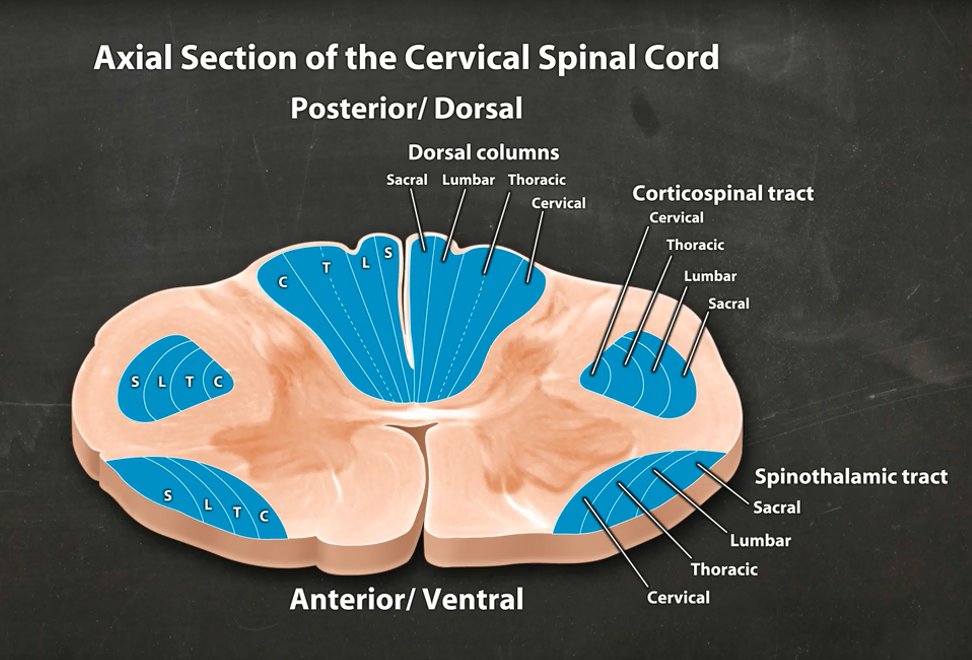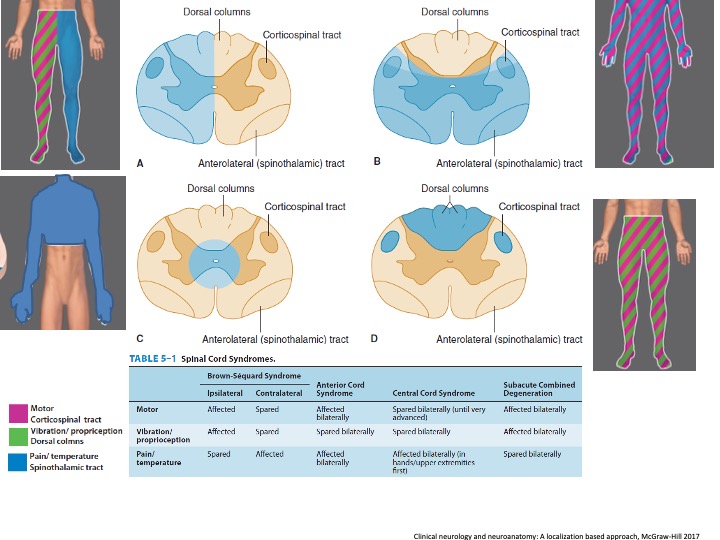THE SPINAL CORD
#meded #Neurology
cc @MedTweetorials @DxRxEdu @CPSolvers @Tracey1milligan
#GeorgeFloyd
#AhmaudArbery
#BreonnaTaylor
and other lives lost to racism, structural violence, police brutality .
.
.
.
.
.
.
Follow some folks I follow
check out @thepraxispod
read #BlackInTheIvory
Good news, you really just need to know 3 tracts for clinical neurology (and most step 1 ?s)!
DCs (vib/prop): posterior
STTs (pain/temp): anterior/lateral
IPSILATERAL below level of lesion
DCs: cross in lower medullay, so vib/proprio deficits are IPSILATERAL below level of lesion
STTs: *cross immediately* in spinal cord so pain/temp deficits *CONTRALATERAL* below level of lesion
*STTs (pain/temp) are the exception, deficits = CONTRALATERAL*
CSTs (motor) /DCs (vib/prop) deficits = ipsilateral
- functions of these 3 tracts
- where they cross (STTs in cord, others in lower medulla)
- lamination (DCs feet to feet medial; CSTs/STTs hands medial)
then you can understand the 4 common spinal cord syndromes!
HYPERACUTE (minutes to hours) myelopathy:
Trauma
Structural disease of the spine: acute central disc prolapse acute vertebral collapse
Vascular: stroke, epidural hemorrhage, or spinal cord hemorrhage (hematomyelia)
Infxn: viral myelitis, epidural abscess, schistosomiasis
Inflamm: transverse myelitis, flare of multiple sclerosis, flare of neuromyelitis optica, lupus, Sjögren’s syndrome, sarcoidosis
Structural disease =cervical spondylosis
Tumor: primary or metastatic
Infections: tuberculosis of the spine
Vascular causes: spinal dural arteriovenous
fistula
Metabolic causes: vitamin B12 deficiency or copper deficiency
Infections: human T-cell lymphocytic virus 1 (HTLV-1) and AIDS vacuolar myelopathy
Neurodegenerative myelopathies: hereditary spastic para- plegia, spinocerebellar ataxia, adre- nomyeloneuropathy
Radiation-induced myelopathy







